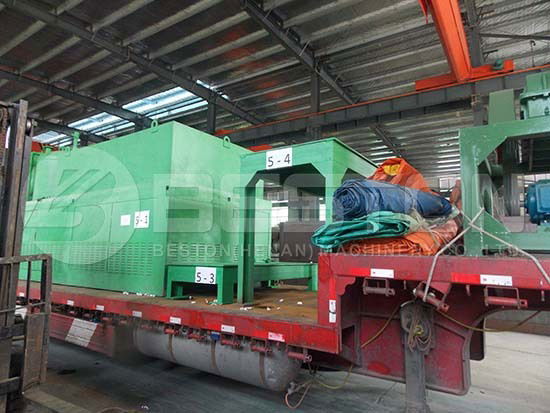Selecting A Continuous Tyre Pyrolysis Plant Along With Its Importance
The continuous tyre pyrolysis plant is created specifically to ensure safety, profits, and is eco-friendly. Not only will this machine work continuously for twenty four hours, but it will also feed raw materials using one side and after that discharge the last products on another side. Most of the time, the continuous tyre pyrolysis plant could work with rubber, waste tyre, medical waste, plastic, and oil sludge.
The Technical Great things about a Continuous Tyre Pyrolysis Plant
1. Manageable electrical control system. Typically, this control system comes with a pressure gauge, thermometer, an unexpected emergency stop device, etc. It’s easy to monitor the working condition of the entire plant so that the machine is running optimally. Indeed, it saves labor costs for investors.
2. Screw feeding sealing system. The continuous pyrolysis machine implements screw feeding sealing system technology, and the company’s invention patents hold this. Which technology will often stop the warmth from spreading. Furthermore, this screw technique ensures uniform feeding.

3. Unique dedusting system. Basically, this means that it creates zero-emission pollution. The environmental standard is stricter in a few countries. In many instances, the dedusting system will take place in three steps to make sure that the discharged waste smoke adheres for the relevant emission requirements. These three procedures include ceramic ring adsorption, water rinsing, and water spraying.
So that you can guarantee safety and price-effectiveness for customers, this continuous tyre pyrolysis plant includes a circulation heating system, a moving horizontal pyrolysis reactor, a robust dedusting system, etc.
Various Applications of Final Pyrolysis Products
1. Tyre oil
- It may be very useful as industrial fuel materials when it comes to burning
- It may aid in relieving energy crisis
- If further refined to gasoline or diesel by waste oil distillation machine, this oil might be useful in low-speed engines, such as a digging machine, loading machine or road roller, etc.
2. Carbon black
- It may be useful as fuel or construction bricks with clay
- It can be further made into briquette or pellet for burning and even further processed to help make cable jackets, pipes, and so forth.
3. Steel wire
- It can be used, or further reprocessed, to create iron and steel rod. More details can be found: https://wasterecyclingplant.com/waste-tyre-pyrolysis-plant/.
Continuous Tyre Pyrolysis Plant’s Operation Description
- Pre-treatment. Pre-management of the waste matter is necessary before entering the pyrolysis process. A tyre shredder machine is needed to crush those tyres into 30-5-mm pieces. It also requires to crash the plastics, especially if they’re large and rigid. In case the humidity of medical waste and plastics is quite high, it needs a dryer.
- Feeding raw materials. Having been pretreated, feed the waste matter into the reactor. Make sure the feeding inlet door is sealed tightly, and ensure there’s no gas leakage too.
- Pyrolysis. Through the use of wood, fuel gas, charcoal, coal, etc. as heating materials, heat the pyrolysis reactor. The reactor will be gradually heated, and when the temperature reaches a specific temperature, the oil gas will probably be created. This is the main tyre to oil equipment.
- Condensing. The condensing system receives the oil gas in the reactor and condenses it to liquid oil.
- Waste gas recovery. Via a safety device, the gas that can’t be liquefied will probably be made to go back to the combustion system.
- Discharge. Typically, the carbon black and steel wire will probably be discharged automatically.



